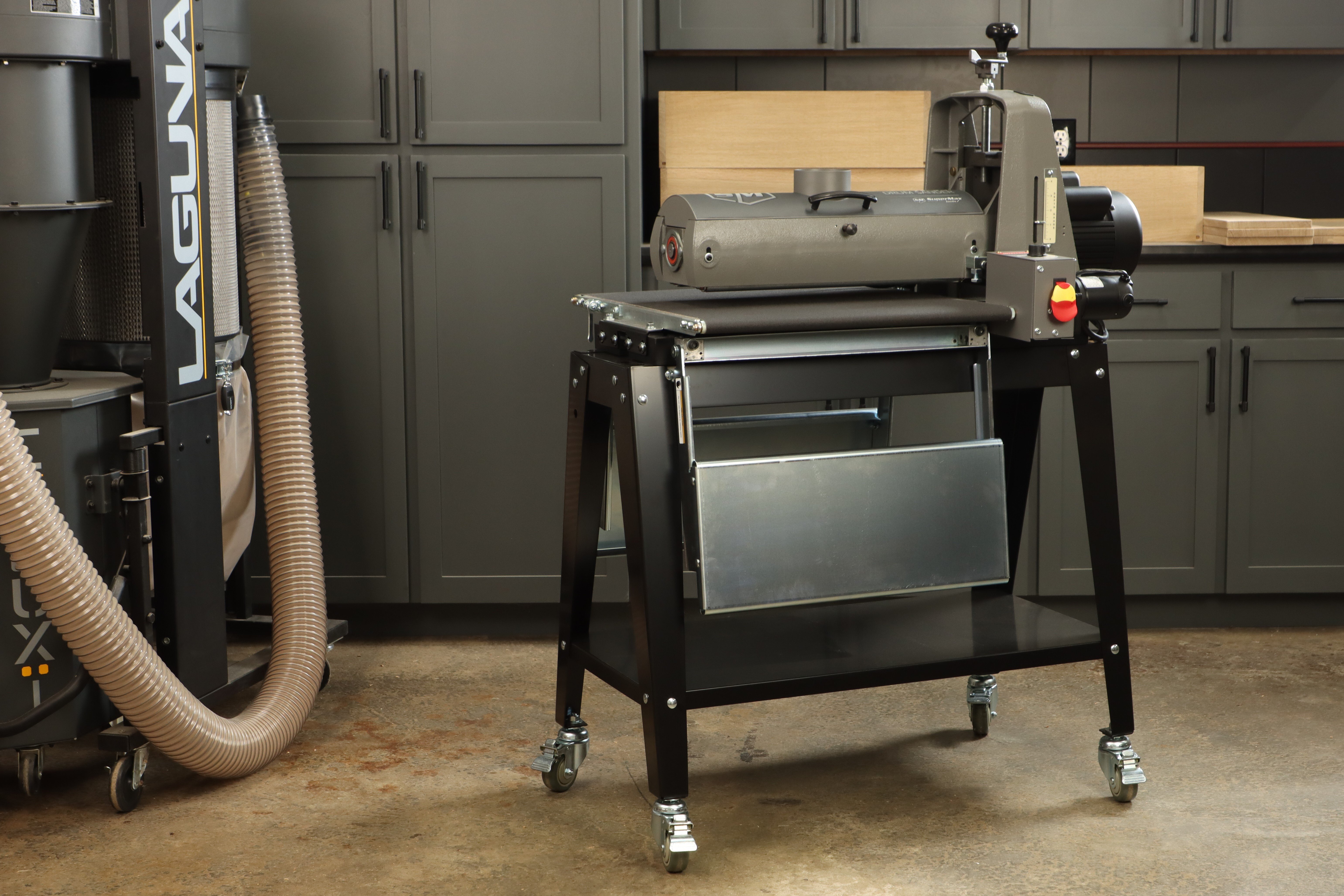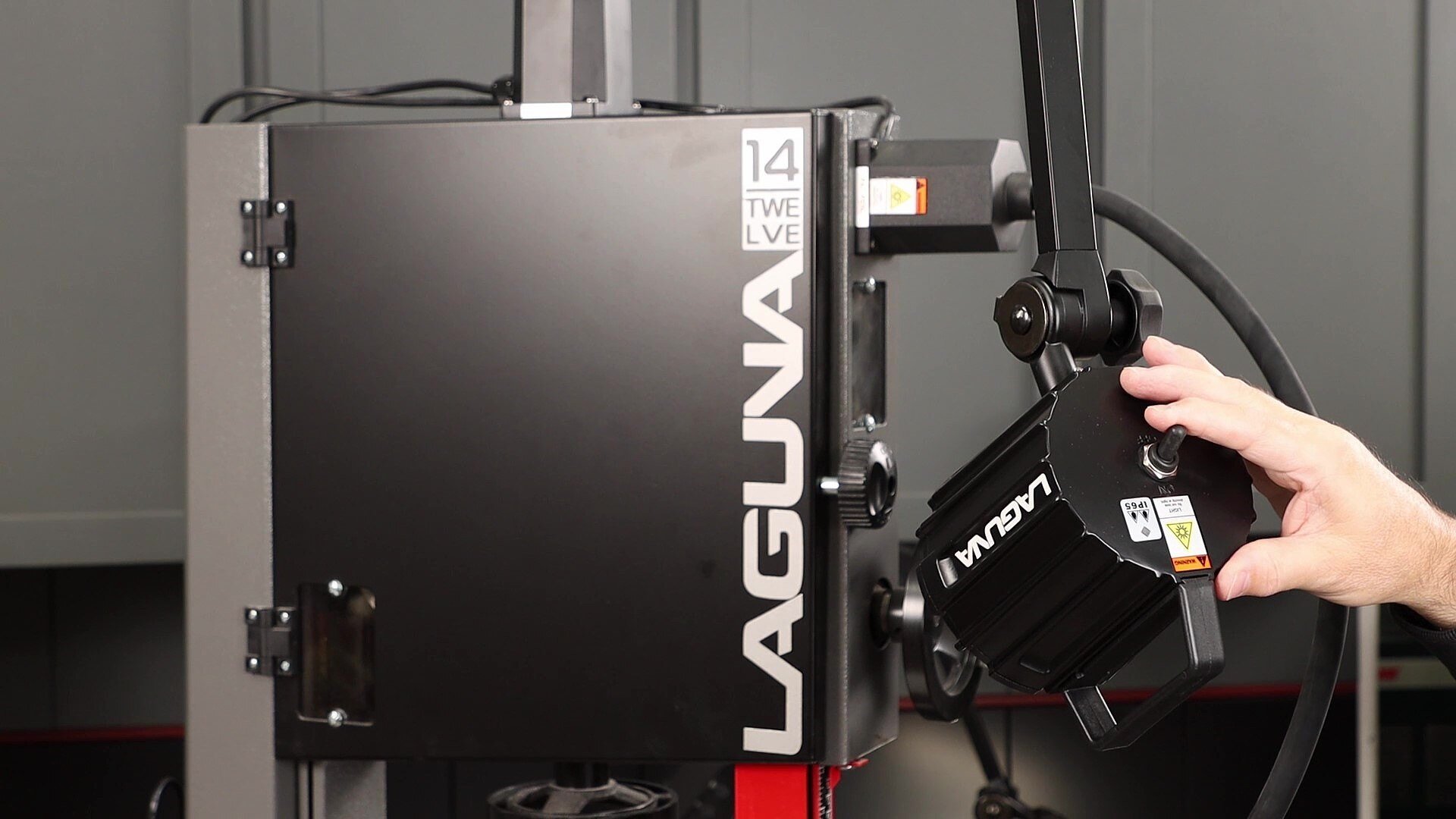It’s challenging to expand your business in classic woodworking… but the culprit isn’t the usual small business challenge.
Instead, your woodshop determines whether you can scale.
You simply can’t turn out high-quality products at scale with hobby-grade machinery.
If your bandsaw isn’t meant for daily heavy use, then it isn’t going to keep up with frequent complex cutting.
If you have a low-volume dust collector, you’re going to lose five minutes emptying it out after every job.
Ultimately, when you’re shopping for classic machinery, you should look for:
- Precision
- Performance
- High-quality manufacturing
These three characteristics ensure that your machinery can keep up with increasing production volume as you expand.
If you’re a hobbyist and not a business owner, then you still need high-quality machinery. Precision and performance aren’t less important just because you’re not working to meet production quotas.
Why limit your projects and creative growth because of subpar tools?
Not sure what tools belong in your classic woodshop? Here’s a rundown of classic woodworking machinery basics:
Bandsaws

A bandsaw is one of the most critical parts of your shop. If you crosscut shorter pieces of lumber, rip lumber, or cut curved or irregular shapes, then a quality bandsaw should be one of the first big investments.
Bandsaws are deceptively simple at first glance. The main components are a motor propelling a wheel system that holds and accelerates a rotating blade set into a table surface.
But there’s a lot more to it than that.
When you’re shopping for a bandsaw, look for features like:
- Pyramid-shaped spine for added stability and safety
- Cast wheels with dynamic balancing for long-lasting performance and less overheating
- Stable worm gear and pinion to lessen flex, increasing accuracy and minimizing wear
- Double windows for easy monitoring of tension and tracking during operation
A wheel kit and built-in lighting system help streamline your operations by adding portability. When your bandsaw isn’t tied to a specific part of your shop, you can easily rearrange your workflow to match each project.
Dust Collectors

It’s no secret that wood dust is bad for your health. A high-quality dust collector snatches wood dust particles from the air before they have a chance to settle on shop surfaces—or in your lungs!
Dust collectors have a few common elements:
- A motor that controls an air intake
- A filtration system, either basic or sophisticated
- An outflow valve
From there, some systems have flex hoses that serve as an intake, while others have built-in lift systems and hoseless designs that take up less space.
Some handy dust collector features to look out for include:
- Remote operation so you can control the settings on the go
- Acoustic insulation for low-vibration operation
- Cyclone design to create low pressure and keep the collection bag in place
- Bagless design for fewer maintenance steps and lower operation costs
Having the right dust collector makes a real difference in your workshop’s productivity. It helps you and your team breathe better and perform better.
With a low-maintenance design, you spend less time emptying and resetting the dust collector and more time working.
Jointers

A good jointer is fundamental to your workshop’s success. Every board that goes into a jointed design needs a perfectly prepped, smooth surface.
Across hundreds and thousands of projects, your jointer needs to be able to take a lot of abuse.
At its core, a jointer includes an electric motor that drives a cutting head, which produces a smooth surface when it comes into contact with the board. It sits on two connected tables called the infeed and outfeed.
Other features you should look into include :
- A longer bed to handle a wider range of jobs—think 56 inches or more
- Carbide blade inserts for smoother finishes and longer blade life
- Deep gullets to prevent the machine heads from getting clogged with wood chips
- Angled blade inserts for low-impact, low-kickback operation
The huge range of jointer features means there’s a specialty machine for every hobby or small business.
If you’re looking to increase your output capacity, then look for a jointer that has more carbide head rows. It’s common for jointers to come with just two or three rows when six is much more efficient.
Lathes

Have 360-degree precision shaping to do on a daily basis? It’s time to consider upgrading that lathe.
The benefits of a better lathe include:
- Precise shaping
- Better details
- Faster progress
- Bigger output
Every lathe has a headstock, which contains bearings that spin and cause a spindle to rotate. A motor operates the headstock while the tailstock holds tooling.
If you make products that need to be detailed and symmetrical, then it’s very important to get a good quality lathe with more-than-basic features.
Important lathe features include:
- A variable-speed motor for versatility across different projects
- Cast iron or steel construction for stability and vibration absorption
- Easy-access pulleys and drive belt for quick maintenance
- Ergonomic control for comfort during long production runs
Planers

If your shop processes lumber into boards, then a quality planer is a critical part of your woodshop.
A typical planer has a cutting head with blades, a roller system that pulls the board through the cutter head, and a table that you can adjust to different heights for different board thicknesses.
Those are the basics, but if you’re interested in processing boards en masse, then you’ll need something more.
Some best-in-class planer features include:
- Carbide cutting blades for longevity and faster surface removal
- Six-row design instead of the typical four-blade for longer-lasting heads
- Deep gullets to avoid frequent clogging
- Cast iron extensions to dampen noise for quieter operation
- Digital readout for ease of operation
This combination of features helps you process stock with butter-smooth edges and fewer imperfections.
Sanders

Whether drum sanders or brush sanders are your go-to, a better sander is a must-have if your shop handles:
- Raw wood sanding
- Whitewood sanding
- Blending out defects and scuffs
- Profile sanding
- Wire brushing
- Reclaimed wood restoration
Not every shop handles raw or reclaimed wood on a regular basis, but most shops do deal with blending out defects on a constant basis. Even high-quality lumber is still a natural product that’s subject to natural variation.
The benefits of a better sander include less reworking, faster processing, and a consistent final product.
Look for features such as:
- Sanding drum for surface sanding
- Combination brush-drum design for profile sanding
- Quick-change brush heads for faster maintenance
- Dynamic tension rollers for consistent, no-slip operation
- Precision height adjustment to handle a greater variety of stock sizes
Another consideration is the size of the sander itself. A 50-inch machine can handle a wide variety of hobby and professional projects.
Shapers

A wood shaper is similar to a router but it’s capable of handling much bigger projects. With the right shaper , you can produce crown molding, raised-panel doors, and other detailed projects in a fraction of the time.
If you produce large, complex items like cabinets or furniture, then the right shaper can cut your work time from an hour to just two minutes.
Look for a single-piece welded frame for less vibration and “chattering” during operation. Any machine that operates at 8000 RPM can be noisy with an unstable frame!
A dynamically balanced spindle runs smoothly, minimizing imperfections in processing. Wood shapers run at half the speed of a router (or less), so balancing is important for an accurate final product.
Tablesaws
Do you rip boards on a regular basis? If you’re regularly processing large amounts of sheet stock, then a better tablesaw can help increase your efficiency.
The basics of a tablesaw include an arbor or a round bar that holds a circular saw blade. An electric motor drives the arbor and blade while a tabletop holds the stock during processing.
Other considerations include:
- Built-in wheel systems for better portability in the shop
- User-friendly controls so you spend less time fumbling and more time working
- Quick-release riving knife to lessen kickback
- Heavy-duty steel construction for longevity and less vibration
- Dust collection system to minimize wood dust in the air
Perhaps the biggest consideration for tablesaws is the size! Your ripping work is limited by the size of your tabletop, so choose a tablesaw that’s big enough to hold the kind of stock you want to use.
Outfit Your Woodworking Shop With Classic Laguna Tools
A woodworker is only as effective as his tools. Whether you’re a hobby woodworker or a shop owner, the right tools are the foundation for a better woodworking practice.
At Laguna Tools, it’s our mission to outfit shops with machinery that follows our values of quality, accuracy, and safety.
Our selection of classic woodworking machinery includes:
- Bandsaws
- Dust collectors
- Jointers
- Lathes
- Planers
- Sanders
- Shapers
- Tablesaws





